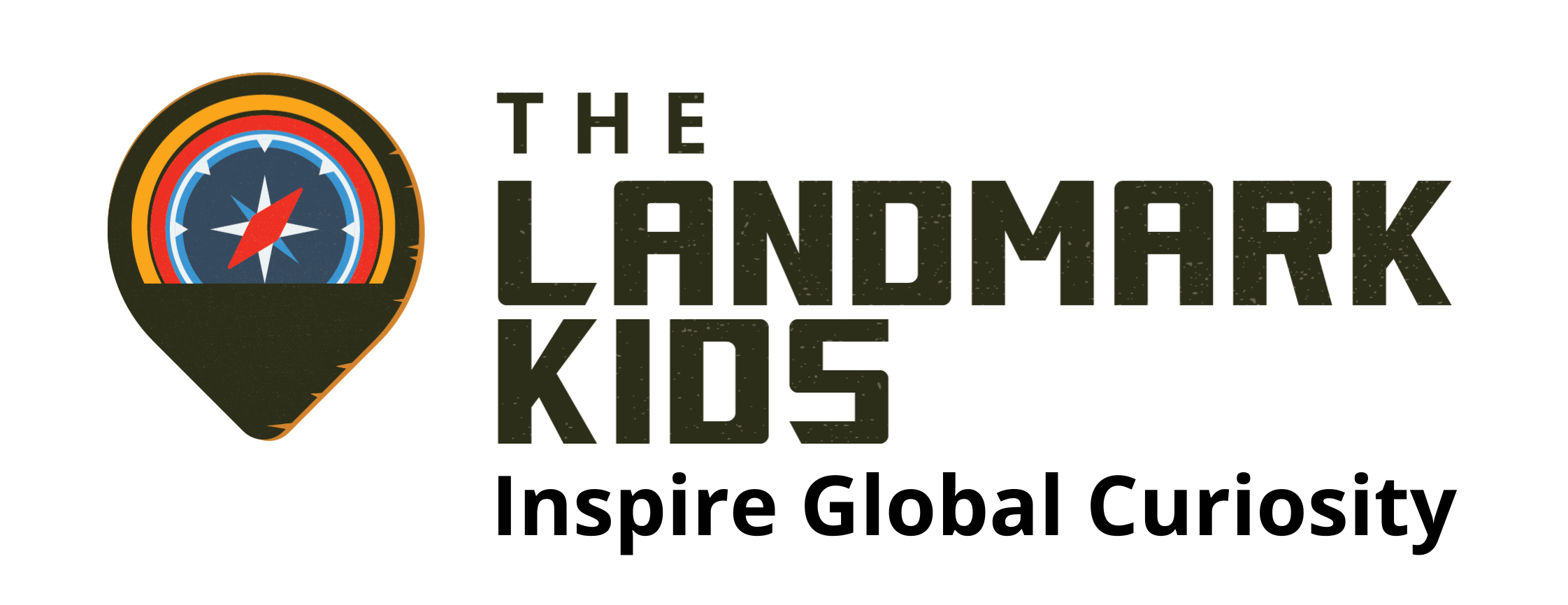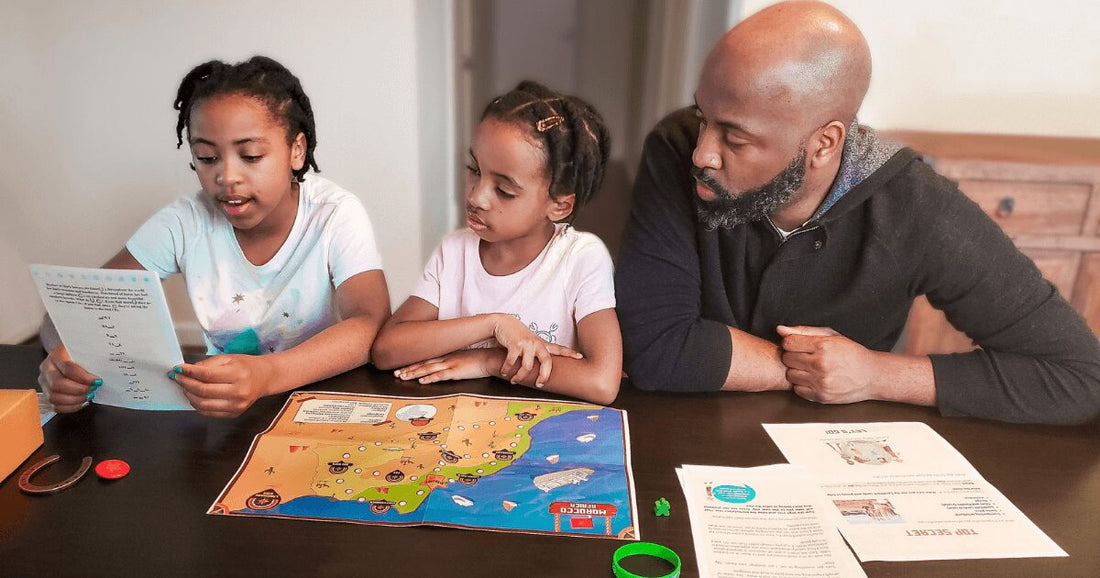when homeschooling.
It’s no secret that geography has a reputation for being a boring subject, and US students aren’t good at it. In fact, a study revealed that 75% of eighth-graders are below proficient in geography!
Yet, at The Landmark Kids, we believe that teaching geography for kids is fundamental in an increasingly globalized world and is an integral part of a well-rounded education. Learning about the Earth, its ecosystems and the various countries, cultures and traditions that coexist on the planet is just as important as reading, math, and science. It brings awareness to kids helping them to better understand their own country, the world around them and the intricacies of world events and national issues.
The great news is that there are fun and engaging ways to teach geography to your child from home.
Got you intrigued?
Great!
In this post, we’ll briefly touch on what middle school children typically learn in geography before highlighting seven ways to make learning geography fun for kids.

What Do Middle Schoolers Learn in Geography?
While geography is important enough to be taught as a standalone subject, it’s usually part of social studies (along with history, economics, civics and sociology). Now, teaching social studies and, more specifically, geography for kids in middle school should go beyond teaching them how to find places on a map and memorize capitals.
Some of the most important concepts taught in middle school include:
- The structure of the Earth, its ecosystems, the climate, the directions, maps and plates
- Economy, population and immigration
- Cultures, languages and religions
- Governments and citizens
- Geography and history of several countries and regions, including the US, Canada, South America, Russia, African regions, China and Oceania.
What do sixth-graders learn in geography?
For sixth-graders, geography tends to focus on learning the relationship between environments, places and people. Sixth-graders typically study the physical processes shaping the Earth. They also learn how to read maps and the specific characteristics of regions, including infrastructure such as roads, and buildings, along with languages and cultures.
What do seventh-graders learn in geography?
Political systems, culture, climate, economy, demographics and physical geography are all coming together in the seventh-grade curriculum. After a brief review of basic geography knowledge accumulated during the six-grade, the curriculum will cover physical and human geography in more detail and deep dive into the cultural, political, and geographical aspects of several countries, including the USA, Canada, European countries and Australia.
The biggest challenge with these topics is finding a way to make them appealing to middle schoolers. Let’s be honest. Even though these subjects can be exciting to learn for adults, they’re not the most enjoyable topics for kids.
How To Teach Geography in a Fun Way?
Teaching geography to kids at home isn’t always easy. That’s why to assist you in this complex task, we’ve listed below seven ways to make geography fun to help spark your kids’ curiosity and excitement about the world.

1. Travel Videos
By middle school, most kids have been through the typical songs about geography that are taught when they’re little. The songs about the states and continents are fun, but travel videos might be a better tool to engage a middle schooler!
These days, there are plenty of them to choose from that show exciting places around the world and dive into the culture, landforms, governments, and other aspects of geography. Travel videos are a fantastic way to bring geography to life, draw your children in and immerse them into countries, cultures and traditions.
Some of the best geography channels for kids include:
2. Map Puzzles
What better way to learn about countries, and continents than using a good old classic; the map puzzle!
Map puzzles are an interactive and engaging way to teach geography to kids. By putting pieces together, your kids will more easily memorize country names and locations, physical borders, oceans, capital cities, states and even monuments. Not only will map puzzles keep your children’s minds active, but they’re also a great way to develop their problem-solving skills.
Your sixth-grade geography lesson will instantly become far more exciting when there is a puzzle to solve!
As an extra tip, we’d recommend looking for puzzles that mesh with different aspects of social studies and involve logic, like the ones we provide in our mystery subscription boxes. This will help you encourage your kids to think about the bigger picture when putting together the pieces rather than just focusing on matching up shapes. These puzzles are a great way to make geography for middle school more challenging and interesting.

3. Globes and Maps
Another way to make geography fun for kids is investing in current globes and maps.
Displaying globes and maps in your home is an effective way to create a homeschooling environment conducive to learning geography. These tools are a fun way to teach geography to your kids and can help them immerse themselves in other countries and cultures to become real citizens of the world.
Globes are the ultimate education tool as they provide an interactive experience to children. If you can, source a globe with topographical features so they can learn even more!

4. Play Games
When it comes to sixth-grade and seventh-grade geography, one of the best ways to make it fun is to play. Learning games make it easier for kids to engage with the topics and retain what they learn.
Remember the globe we mentioned above? Why not use it to play some fun games? For instance, you can spin it and point randomly to have your child name the location. You can also have them design their own map of a place you’ve talked about during your homeschooling.
The list of interactive geography games to play to make geography a fun and exciting subject for your kids is endless.
Some of the best geography games are:
These board games and online games will allow you to develop and test your children’s knowledge and help them have fun exploring the world from home!
5. Visit the Library
Why not take a field trip to the library and read about all the different countries in the world?
Going to the library every now and then will spice things up, making geography lessons a fun experience.
What’s more, the books you’ll find there will help complement the ones you have at home. And if you don’t know where to start, the librarian can help point you in the right direction. Make sure to pick books designed for middle schoolers to ensure it’s relevant to the curriculum and suitable to their age.

6. Explore More
We tend to associate geography with far-off lands. And so do kids. But why not start by exploring your own backyard?
Start your introduction to geography lessons by showing your kids how geography and social studies come together in your community. Talk about the things surrounding you, show them what your neighborhood looks like on a map, and get to learn together about the landmarks and places of interest in your local area.
And of course, if you can, explore other countries too. It’ll allow them to experience what they’ve learned and will help broaden their mind. If traveling somewhere isn’t possible, you can have themed family dinner nights that explore the cuisine of different countries.
Teaching geography to kids through international cuisine is the tastiest way for them to learn 😉
Each week, pull up a recipe from a new county and cook it together. Not only will they learn a lot about different cultures and countries but this is also a fantastic way to spend some quality time together.
You can check our latest post on 11 fun Moroccan snacks to make with kids for some inspiration 😉

7. Use a Mystery Box
What if you could spark your kids’ curiosity for geography by adding a dash of surprise and zest of intrigue to the typical middle school geography lessons?
Sound like a good idea?
At The Landmark Kids, we’ve designed monthly mystery subscription boxes for children aged 9 to 13+ to help them learn about the world around them and give them a global perspective. Each month, they will explore a new country and get to solve clues, puzzles, and mysteries. Gamifying their learning experiences is a great way to make learning fun. So, don’t hesitate to sign up now for a chance to win a free 3-month subscription!
And who knows, after doing all these activities and using your first subscription box, they might even ask for more 😉

